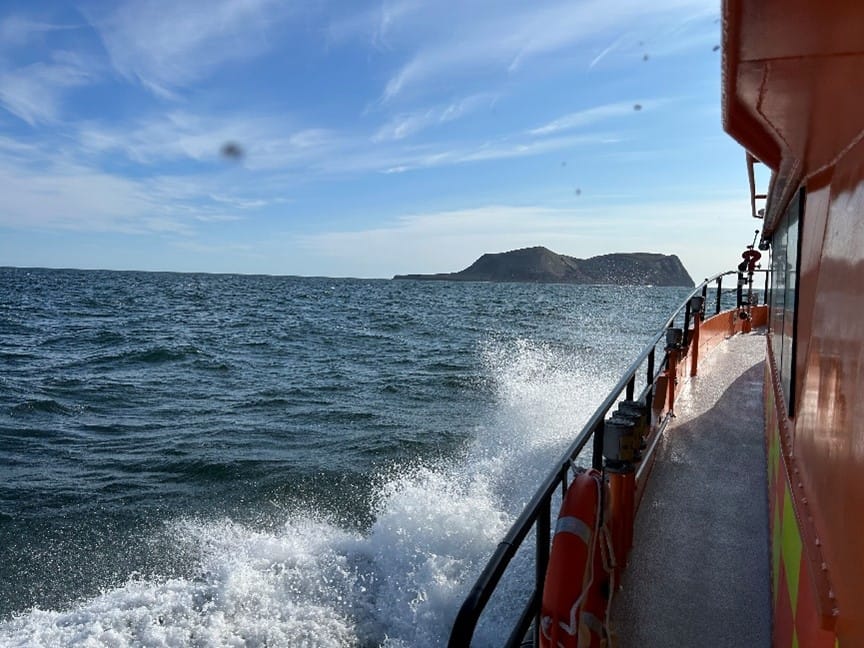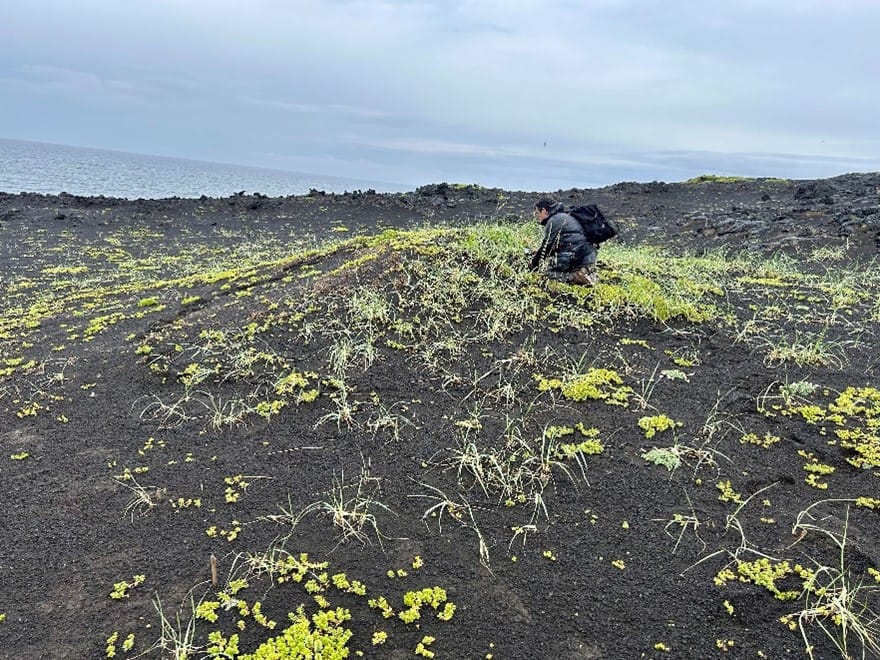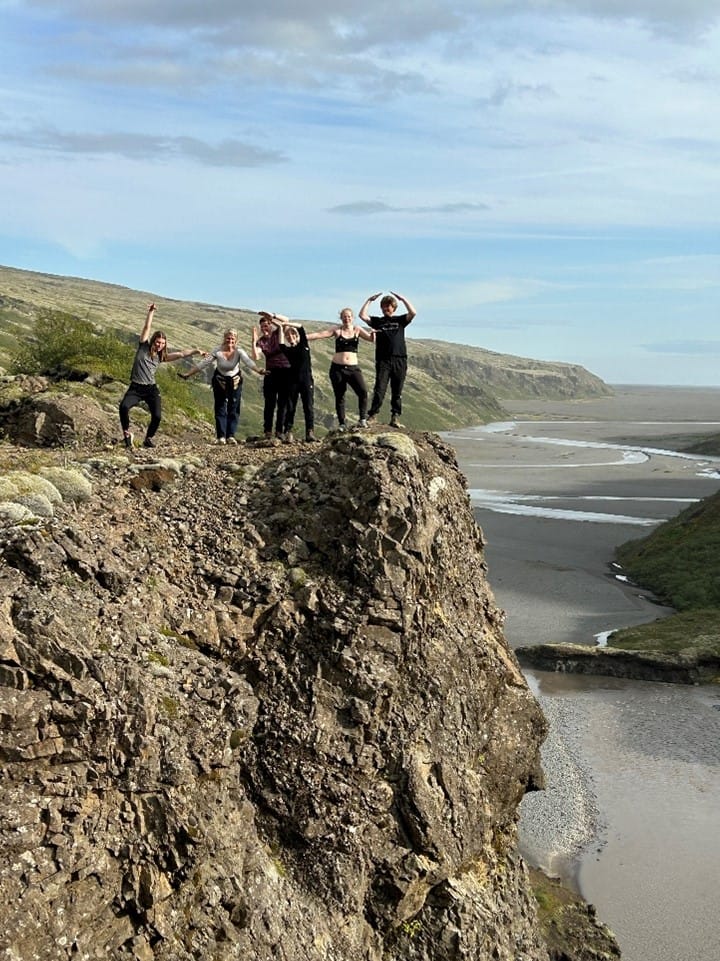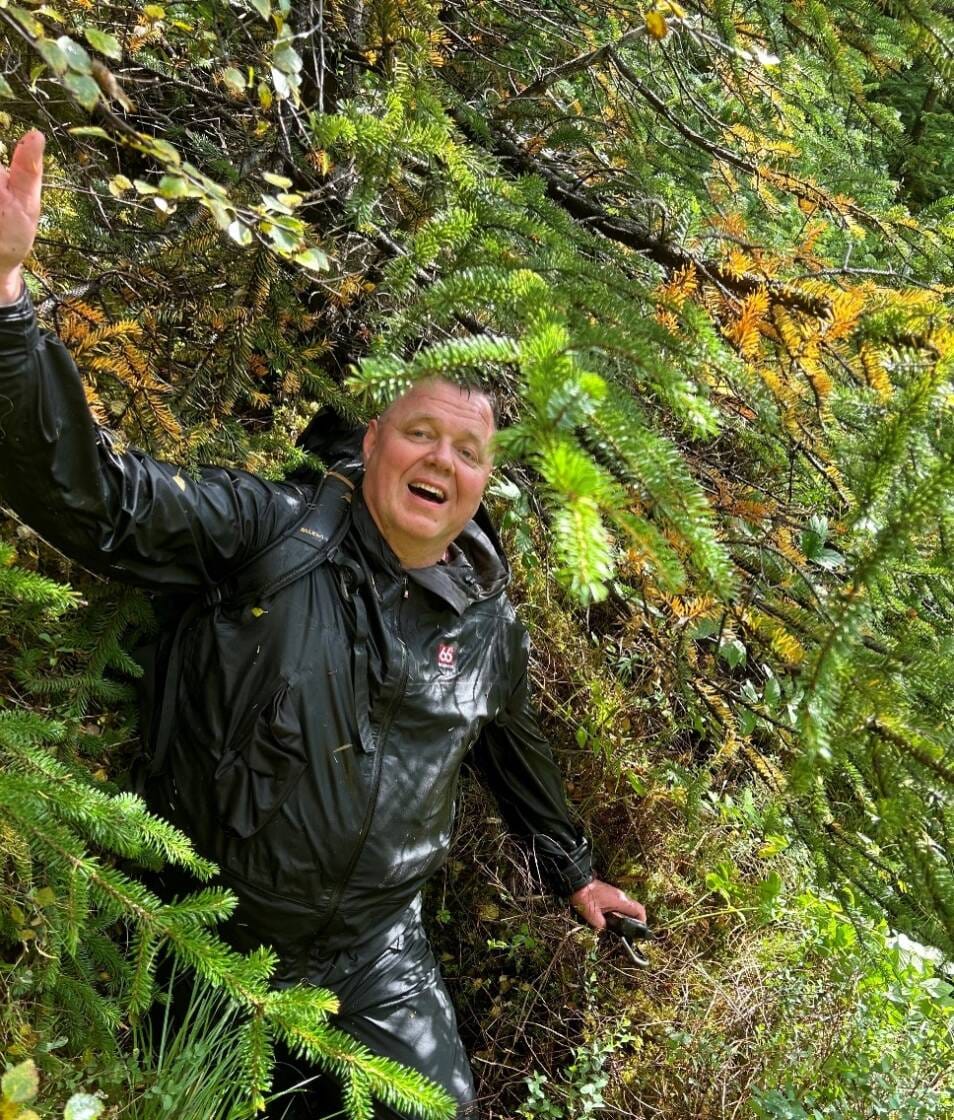Name: Bjarni Didrik Sigurdsson.
Age: 58 years old.
Occupation: Professor of Forestry at the Agricultural University of Iceland. He lives in Selfoss.
Your favorite place in Iceland: Bæjarstaðarskógur and Surtsey.
Who does the cooking in your home?
My better half contributes more to her than I do – but I stand by my word when it comes to throwing a party.
What did you want to be when you grew up?
Naturalist or farmer.
What book do you have on your bedside table?
Last time I was reading “Mold ert tú” by Ólafur Arnalds.
What to do this weekend?
Vote right and meet the grandchild.
Do you have pets? No
Coffee or tea? Coffee – and lots of it!
What is your main form of exercise? Hiking and working trips in nature
What’s the weirdest thing you’ve ever eaten/tasted?
Hmmm – grilled green iguana in Honduras was a surprise!
Summer, winter, spring or autumn? Spring
Do you have a favorite spring bird?
Many! But the most popular is the crocus. In the plant kingdom, it is a winter flower.
What is your favorite swimming pool (or swimming pool) in the country?
Seljavallalaug pool under the Eyjafjöll mountains.
If you could go anywhere in the world, where would you go?
My husband and I are collecting volcanic islands. Next up, hopefully, the Azores.
How do you contribute to a better visitation with the environment?
By teaching about the sustainable use of nature.
What advice would you give to university students currently studying?
Study what interests you the most! And full-time study is the same as full-time work.

Forest growth measurements.
What is the connection of your research to South Iceland?
I have been conducting research in South Iceland and elsewhere for over 30 years. Most of my research is related to forestry and land reclamation and the effects of climate change or land use change on vegetation and soil. I have also always been very interested in how the development of ecosystems begins in new areas, such as the glacial skerries of Breiðamerkurjökull or on Surtsey. But here I will only discuss my research on soil and vegetation in Surtsey.
Why did you choose this research topic?
I was born in the Vestmannaeyjar Islands and lived there alternately with Öræfin when I was growing up, or for a total of 11 years of my life. It was always my dream to get to Surtsey and study how life forms on an isolated volcanic island. After I returned home from my PhD, I submitted applications to the Surtsey Society to start new research there and first went there in 2004, and now I have been to Surtsey a total of 20 times on annual biological expeditions.
What did you enjoy most about the research work?
Nature is an endless source of inspiration and mystery. It is fascinating to try to understand it better. Research work is also very diverse and requires that one can plan projects, design and even build various equipment, be out in nature both summer and winter to collect data, present results and teach science to young people, and then research is more often than not a team effort where one meets very interesting people both here in Iceland and abroad.

On the way to the promised land with Thor VE.
Briefly tell us about the study and its results.
What caused a turning point in the vegetation development and ecosystem development on Surtsey was when herring gulls and black-backed gulls began nesting there in 1985; within a few years, a nesting colony of about 200 nesting pairs had formed in a limited area. My research and that of my graduate students has shown that the gulls carry an average of about 55 kg of nitrogen (fertilizer) per hectare each year, which is about 50 times more than other areas of the island receive through precipitation and from the atmosphere. By using stable isotopes, we have been able to distinguish how much nitrogen in the soil and vegetation originates from the ocean (carried by gulls) or enters from the atmosphere. It is precisely nitrogen that vegetation lacks most to survive and thrive in the pure volcanic soil of Surtsey, but other factors are also very limiting, such as the low water holding capacity of the soil due to the lack of organic matter in it.

Here you can see the mound that was formed from the first landslide that made landfall on Surtsey. It is called Sturluhóll, after Sturlu Friðriksson.
Outside the gull roost, ecosystem development is therefore very slow and there is still surface vegetation cover.< 20%, but the species that grow there have very large root systems, so that today roots can be found everywhere where there is loose soil on Surtsey. There have been much greater changes in the soil ecosystem in the last two decades than are visible above ground. There, the turnover of the large root systems has begun to form organic matter in the soil and increasingly complex communities of soil animals are gradually building up, but changes in vegetation are still small. It is interesting that by far the largest part of the nitrogen that has entered these areas with wind and precipitation over the last 40-50 years has been “captured” and is now circulating between vegetation and soil. Over time, as fertility increases, the vegetation will become denser and more plant species will be able to survive there.
.

This is the area where gulls began nesting in 1985 on Surtsey and where vegetation development and soil formation are most advanced.
Where the gulls have settled and have brought in in a relatively few years the amount of nitrogen that would otherwise have taken many centuries to build up, there has been a complete explosion in rapid vegetation development. The composition of the vegetation there is now comparable to that on older islands in the Vestmannaeyjar cluster, and Surtsey is now the outlying island of the Vestmannaeyjar archipelago where the most plant species are found. Only Heimaey has more plant species, as it is by far the largest. However, soil formation there has not been able to keep up with the vegetation development, and it has become clear that the vegetation in the gull nest is quite sensitive to summer droughts, such as those that occurred in 2012 and again in 2023. I will stop here.
Which researcher would you like to nominate for next month?
I challenge ecologist Hlyn Óskarsson who lives in Stokkseyri.

The walrus nests on a flat plain in Surtsey due to the extensive protection there.

On a trip with forestry students in Núpsstaðaskógur.
The photos are all from Bjarni Diðrik’s private collection.


